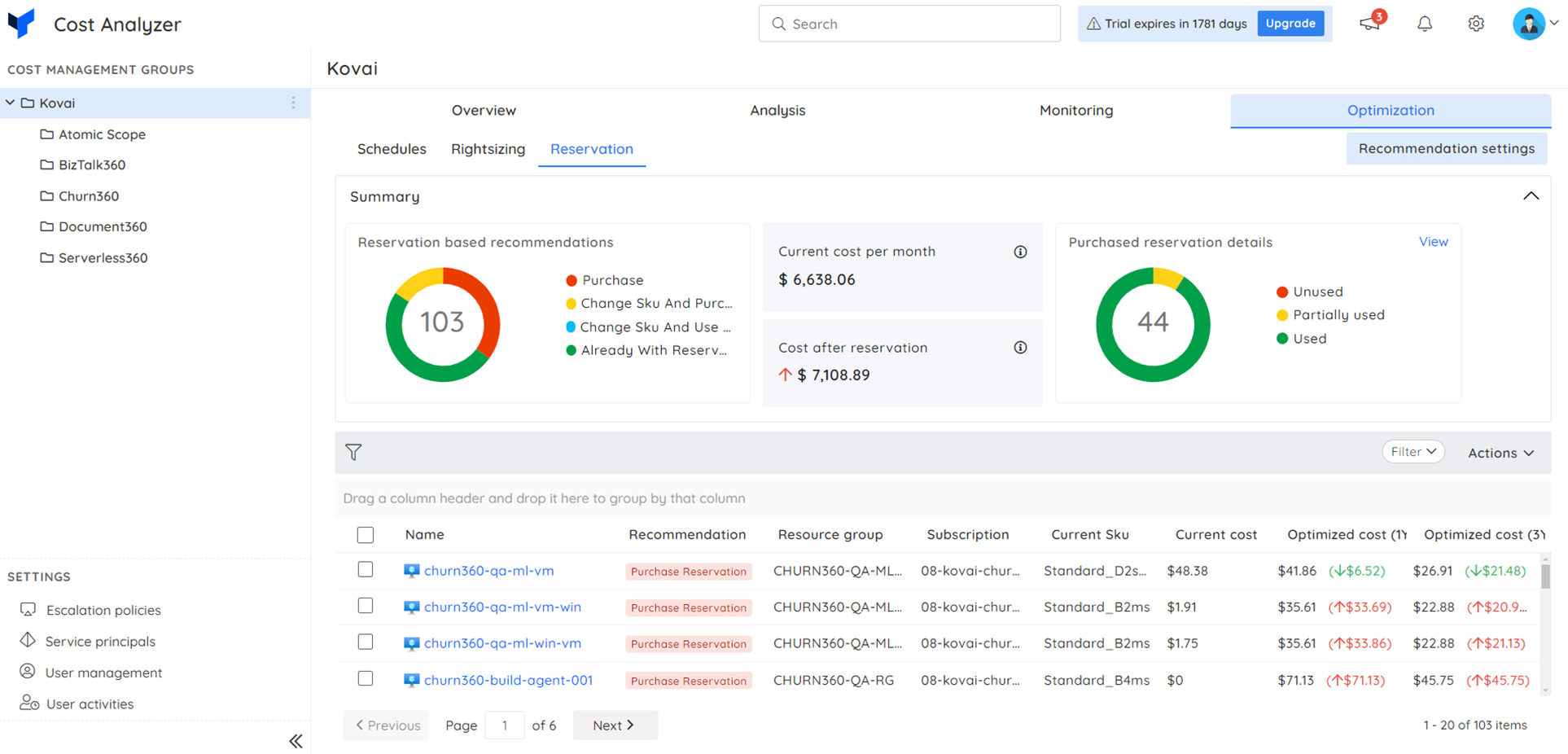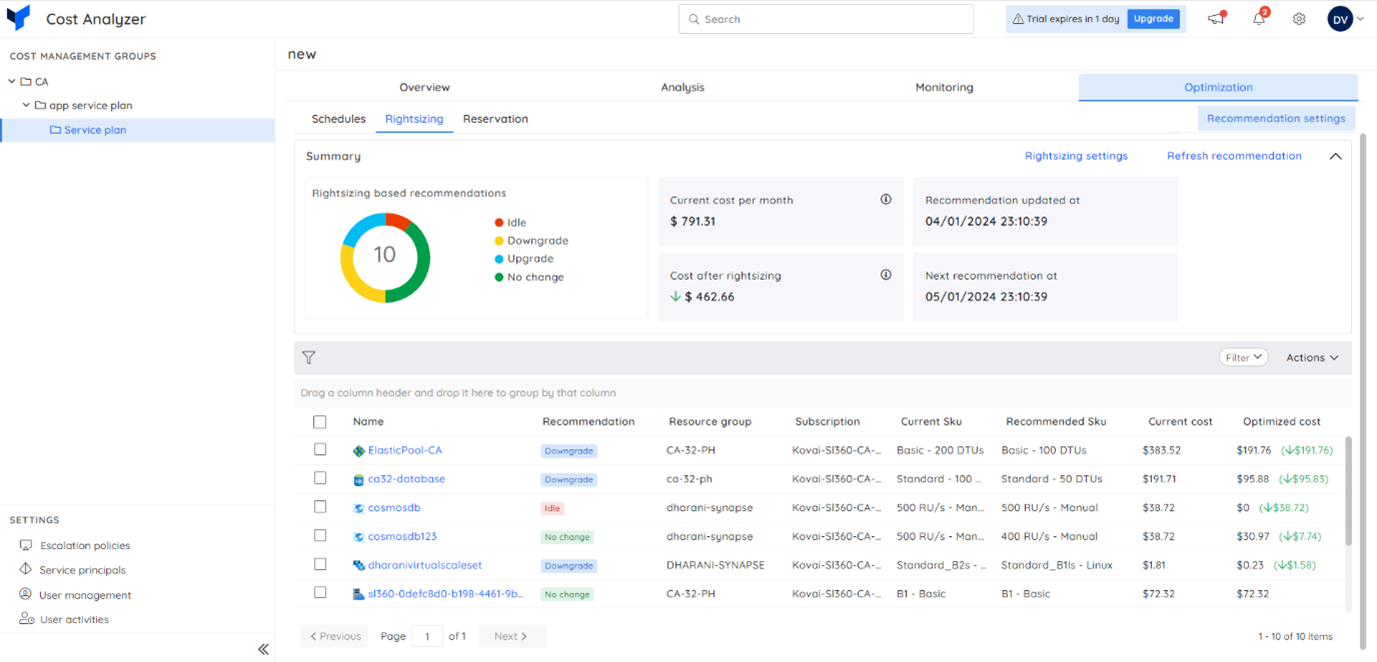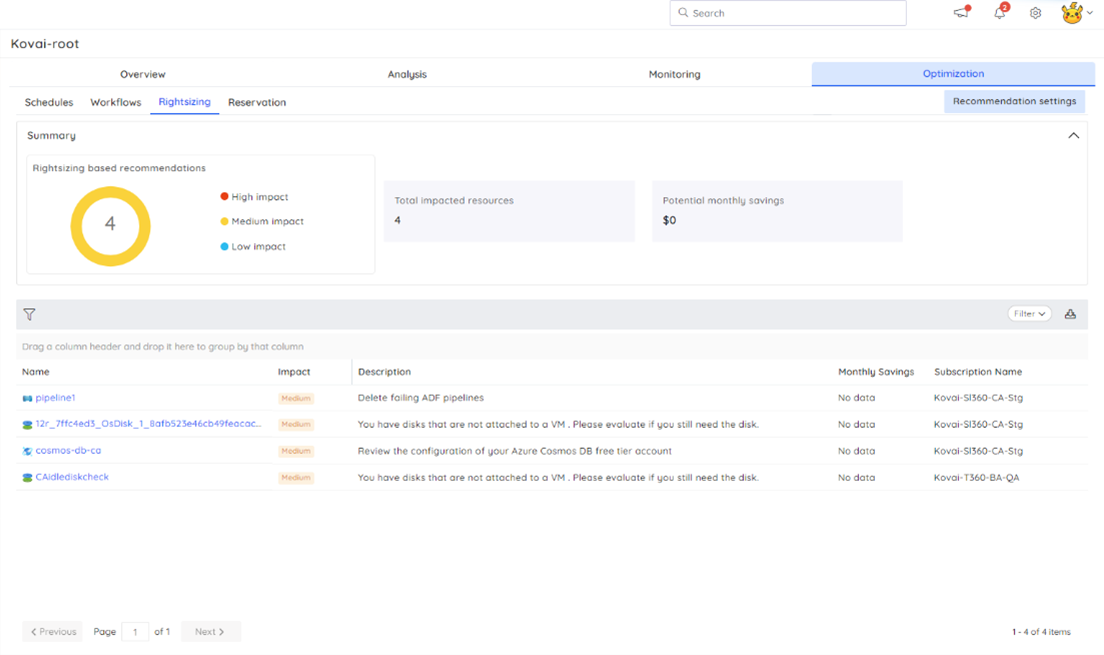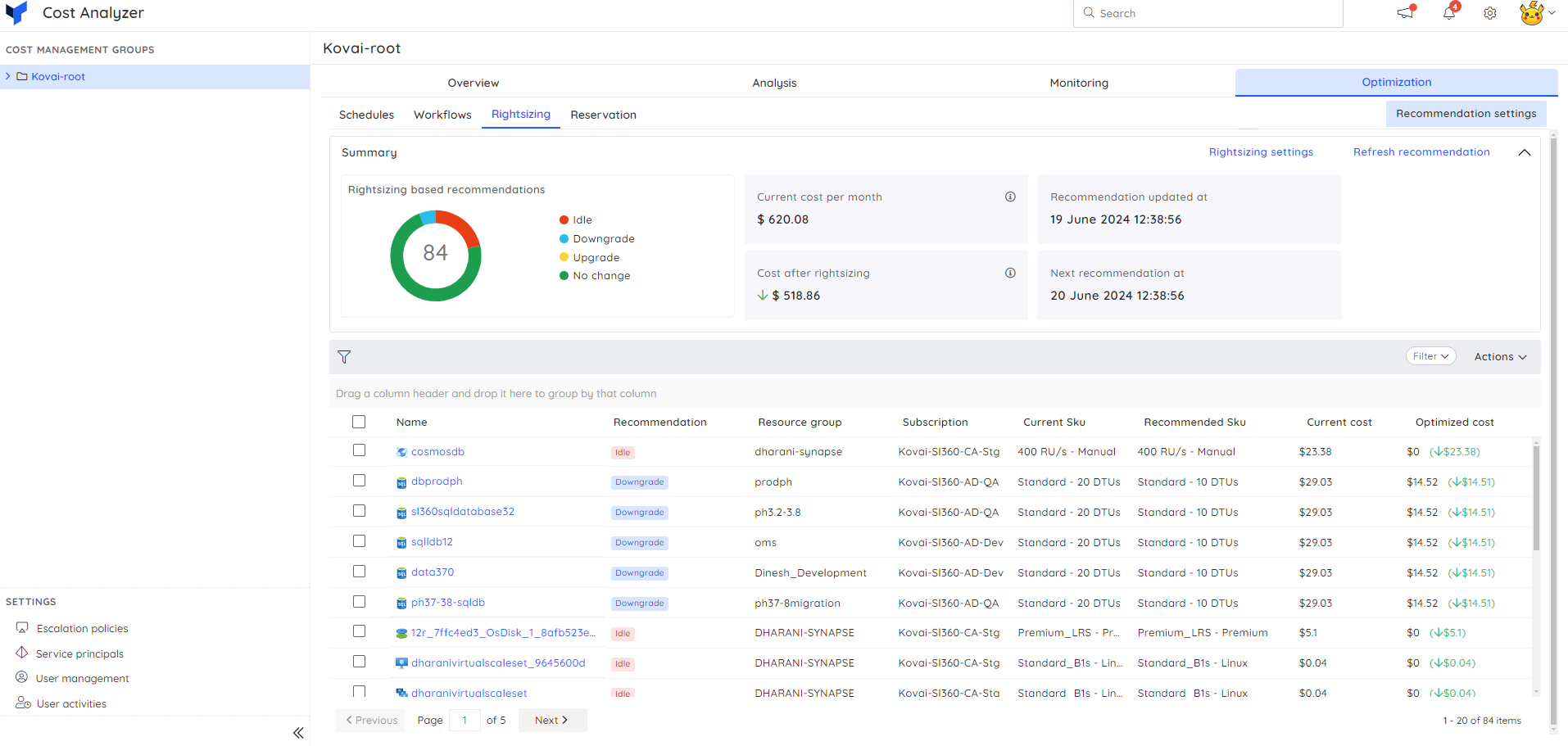Microsoft Azure offers a variety of solutions for cost management, with Azure Advisor being one of the core features. Azure Advisor provides insights into reservations and right-sizing for various Azure resources. While Microsoft Azure excels at building and deploying solutions, there is often a notable gap when it comes to operations and cost management.
One reason for this gap is that the Microsoft Azure portal is primarily focused on the deployment view, which includes resources, resource groups, subscriptions, and tenants. However, the operations team typically requires a view aligned with business needs, which is more actionable and relevant to their responsibilities. This necessity extends to cost management and the recommendations provided by Azure Advisor as well.
Why is there a gap in Azure Advisor Recommendations?
Azure Advisor offers valuable features, but implementing its cost recommendations and insights in real time is challenging. This difficulty arises due to a lack of context or cost scope, making the recommendations less user-friendly, even for Azure experts. The recommendations are closely tied to the deployment model of Azure resources, which limits their usability. In practice, we find many customers just don’t know that recommendations are there, or if they do, they can’t map them to the applications where they would apply so, they get ignored.
What are cost scopes?
Cost scope is a critical concept in cost management. An Azure bill can range from thousands to millions of dollars per month and cover numerous teams, applications, or even entire businesses. To effectively utilize billing data, it must be viewed comprehensively. By default, Azure Advisor presents a series of recommendations based on the deployment view, focusing on resources and their subscriptions.
While this approach is useful for examining recommendations from a deployment perspective, it becomes impractical as your organization scales. Different teams manage various features of applications, and centralized insights often go unnoticed, reducing their impact.
How do cost scopes promote ownership through relevancy?
A cost-focused view, facilitated by third-party solutions like Turbo360, can be aligned with business levels, allowing you to assign access to the relevant teams. This means all resources within a specific scope are managed by a single team, and Turbo360 provides highly relevant cost recommendations to them.
As a result, teams receive only pertinent recommendation notifications, enabling them to take ownership and act on them effectively.
Difference between Azure Advisor cost recommendations and Turbo360 cost recommendation
Optimization is about looking at how effectively you are using resources from a combination of billing and usage data and then making changes, so you use resources more efficiently.
As a result of optimization, some of the actions you may end up taking include;
- Remove a resource if it is no longer used.
- Change the price plan of a resource if it is not a good plan
- Change the configuration of a resource
- Scale up or down resources
- Purchase a Reservation to get improved pricing
Reservations
In Azure Advisor, the reservations are shown within the scope you set for ACM which will be subscription/resource group level. It does not offer a team—or department-focused view based on something like tag. If I choose the reservation recommendation and click through a couple of times, I can process towards purchasing the reservation, but there is a disconnect from the reservation recommendation and the resource to which I should apply it to. The biggest challenge for the customers in relation to reservations is that they often do not know there are reservations available for them to take advantage of.
Read more: A Detailed guide on Azure Reservations
How Turbo360 helps in maximizing Reservation Insights?
Turbo360’s Azure Cost Analyzer aims to simplify the process of identifying available reservations for your teams. It uses a tree view to provide context so teams can easily see both the reservations they have available and those already purchased.

The platform democratizes reservation data, giving the teams who use the resources clear visibility. This ensures reservations are utilized effectively and helps engineering teams assess whether it makes sense for them to accept a reservation.
Rightsizing
Azure Advisor also provides right-sizing recommendations to optimize cost in addition to Reservation Insights. However, below are the challenges that make it less effective in implementing the same and realizing cost savings.
Read more: Azure Rightsizing for Maximum Performance and Cost Efficiency
Unclear ownership of implementing the recommendations
As we saw above in the abstract, the right-sizing recommendations are given from the deployment-focused view, and hence, they often get overlooked by centralized teams or don’t have the context behind why a particular resource is provisioned.
Also, it is not true that all the right-sizing recommendations provided by Azure Advisor can be implemented. For instance, there could be a VM that is used infrequently but needs a lot of resources when it is used during peak business time. In this case, downsizing the VM might impact its performance negatively.
Hence, decentralizing the recommendations to the teams who own the resource becomes crucial as they will have the context behind the deployed resource.
Non-customizable recommendations
One of the primary reasons why the recommendation might go unactionable is its non-customizable nature.
For instance, applications have diverse resource requirements. Some are more memory-intensive, while others prioritize factors such as disk I/O and disk bandwidth.
In a development environment requiring a VM with high disk space and minimal CPU/memory usage, recommendations based on disk performance metrics become more relevant for right-sizing resources.
However, Azure Advisor has a standard method of detecting resource efficiency based on only CPU, memory, and network usage, which sometimes becomes less relevant.
Unclear on the cost impact of the recommendation
When the company spends a million dollars annually, a two-digit cost recommendation seems negligible. However, when put in the business context, the cost could significantly impact the business’s bottom line.
For instance, when the recommendation is shown to down-size a resource with cost savings insight worth $95/month in a development environment, it might seem small to take action. But when it is rolled out to production, and the same instance is replicated to 1000 customers, then the impact of the cost is significantly high, around $95000.
Reactive recommendations
Generating cost recommendations is one thing, and proactively notifying to take action in real-time is another.
Due to the non-intuitive user experience, we usually see teams half-heartedly or not paying attention to Azure Advisor. Providing weekly or monthly notifications specific to the teams creates more chances for the recommendations to be reviewed and implemented.
Unreliability in the recommendation coverage
We found Azure Advisor making many recommendations around reserved and predictable usage plans but not as often flagging under-utilized and potentially idle resources.
With one of the Turbo360 customers, we looked at the usage for one team. Azure Advisor showed that you had implemented all its cost recommendations, yet when we looked at the environment with Turbo360, we found another $30k per year of cost savings for that single team.
How Turbo360 helps in maximizing right-sizing Insights?
With Turbo360, you can view right-sizing recommendations within the context of your cost scope, regardless of where the resource resides. This feature provides a team-focused view of all recommendations.

Another significant feature is the ability to configure customizable recommendations, which Azure Advisor does not offer. You can adjust the thresholds for right-sizing based on specific resource metrics like CPU and memory. These tailored recommendations enable your team to review highly relevant insights and act upon them, resulting in significant cost savings.
Default Azure Advisor Recommendations within Turbo360
In our latest feature release, we’ve integrated Azure Advisor recommendations for supported Azure resource types, making them accessible in the context of your teams or products. While Azure Advisor’s cost-saving recommendations are powerful, they often lack visibility and actionable insights for relevant teams.
With Turbo360, you can overcome these challenges by accessing Azure Advisor recommendations tailored to your teams, products, or environments. A toggle button allows you to switch between the default Azure Advisor recommendations and Turbo360’s customizable recommendations.
Explore Turbo360’s tailored cost-saving solutions for your Azure environment.
Here is a quick comparison table of the cost recommendations generated by default Azure Advisor versus Turbo360:
| Parameters | Default Azure Advisor | Turbo360 Customizable Recommendations |
| Supported resources | Support to various resources | Supports VM, VM scale sets, Cosmos DB, SQL, Elastic pool, App Services, Public IP, Subnets, Virtual Networks and Disks. |
| Evaluation Period | 7, 30 and 60 days | Up to 90 days |
| Right-sizing threshold customization | Not available | Highly Customizable |
| Savings insights for VM Disks | Not available | Potential savings will be displayed |
| Team focused view and cost democratization | Non-intuitive UI makes it impossible in real-time | Tailor-made platform to democratize data and support FinOps principles. |
Learn more: Difference between Azure Cost Management & Turbo360
To give you a fair idea, we have associated various resources and compared the number of cost optimization recommendations we receive from Azure Advisor and Turbo360 for the same set of resources.
The below image shows the available Azure Advisor recommendations which has around 4 suggestion with Medium Level impact.

On the other hand, the image below represents around 87 recommendations based on the custom configurations with cost savings insights of $518

These relevant insights will motivate the engineers to take action and make cost-conscious decisions when building an application. How much are you leaving on the table? Find out today!
Conclusion
In conclusion, while Azure Advisor provides a strong foundation for cost management with its valuable insights into reservations and right-sizing, it has limitations that can hinder its effectiveness. The deployment-focused recommendations and lack of customization can make it challenging for teams to implement these suggestions in real time, potentially leading to missed opportunities for cost savings.
Turbo360 addresses these challenges by offering a more contextual and customizable approach to cost management. By providing team-focused views, customizable right-sizing recommendations, and clear insights into potential savings, Turbo360 enhances the usability and impact of cost management practices. This platform democratizes reservation data and right-sizing insights, ensuring that relevant teams can take ownership and act on recommendations efficiently.
The integration of Azure Advisor recommendations within Turbo360 allows organizations to benefit from both platforms’ strengths. Teams can easily switch between default Azure Advisor recommendations and Turbo360’s tailored suggestions, maximizing cost savings and operational efficiency.








